
If you ask your friends what’s the most famous ship in history the answer in most cases will be the same, of course, the legendary Titanic. Its history is full of mysteries, at first it was a source of hope and national pride as well as proof of the triumphs of mankind but it soon became a source of nostalgia and pain, the extent of which cannot be described in words. The day the Titanic sank underwater will forever remain one of the most painful days in human history. Although more than a hundred years have passed since the tragic event, no one has forgotten about it and people are still interested in the transatlantic liner.
1. Everyone On The Ship Could Have Been Saved If The Ship SS Californian (The Closest Ship Passed By) Give Importance And Respond To The Titanic’s Help
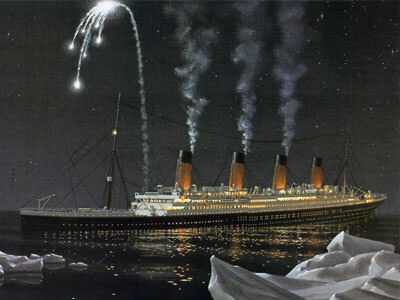
On April 14th, 1912 at 11:40 p.m. the Titanic hit an iceberg receiving fatal damage. A couple of hours later at 2:20 a.m., the ship split in two and within minutes sank completely. During all that time, the ship sent out distress signals that did not go unnoticed. The ocean liner RMS Carpathia rushed to the site of the wreck at full speed but unfortunately arrived an hour and a half later. All the crew of the Carpathia could do was to pick up the 710 survivors of the shipwreck but the story could have been very different. Only after some time it became known that the ocean liner RMS Carpathia was not the closest ship to the Titanic. Around 12:45 a.m. on that terrible night, the officers of the Titanic noticed the lights of another ship in the distance. it was the SS Californian but the ship did not respond to the calls for help.
The captain of the Titanic tried desperately to get his colleague’s attention by firing white flares. It may seem surprising but the watch officers of the SS Californian saw every single one of them, the crew immediately woke the captain but unfortunately he did not give it any importance. The only radio operator who could receive the distress call was asleep at the time. The SS Californian decided that the flares were just a signal from an unknown ship that had stopped on the ice. So the passenger ship which was very close simply passed by. Today experts agree that the SS Californian could have saved many or perhaps all of the lives that were lost that night and that are over 1500 people.
2. The Victims Remain Unknown Because Some Passengers Are Under False Names
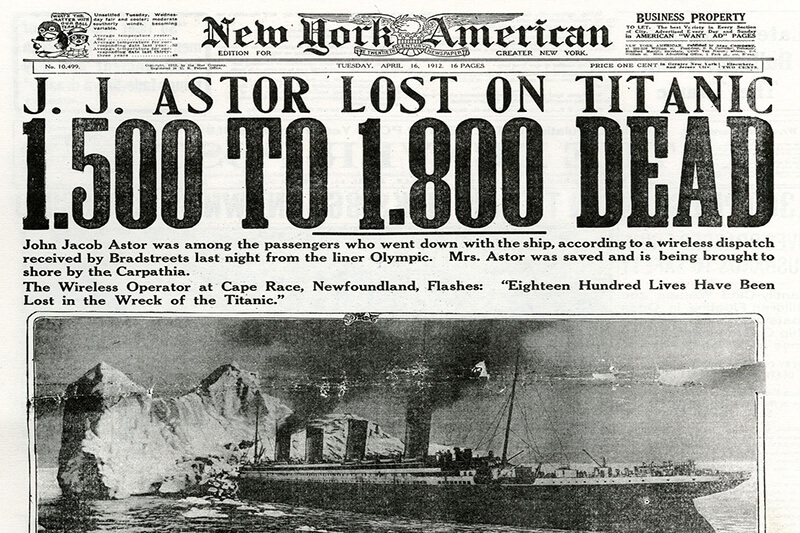
Of course, every global tragedy is followed by a large number of complex and very thorough investigations. If you look at the official figures, it turns out there were 1514 victims of the shipwreck but the truth is much more complicated. The exact number of victims is actually not known. It could be 1,490 or 1635. Moreover, the investigations weren’t very useful so far, no one knows the names of all the people who died on the Titanic. When the bodies were recovered from the bottom of the ocean, it was discovered that any passengers were traveling under false names. Also, there were too many people all from different places and the lists of survivors were made amidst the panic of the catastrophe, not surprisingly it was impossible to identify each person. you can visit the fair few cemeteries in the city of Halifax Nova Scotia Canada where more than 100 victims of the Titanic are buried and there about 30 of them still don’t have names. Surprisingly investigations are still ongoing in 2008 for example one of these graves finally got a name. Extensive DNA testing and a worldwide genealogical search helped identify the body of a 19-month-old baby. The unnamed body of 96 years later has recovered its name “Sydney Leslie Goodwin”.
3. Not Enough Lifeboats And The Official Reason Is That They Would Have Taken Up Too Much Space On The Deck And Blocking The Passages And Covering Up The Beautiful View Of The Ocean.
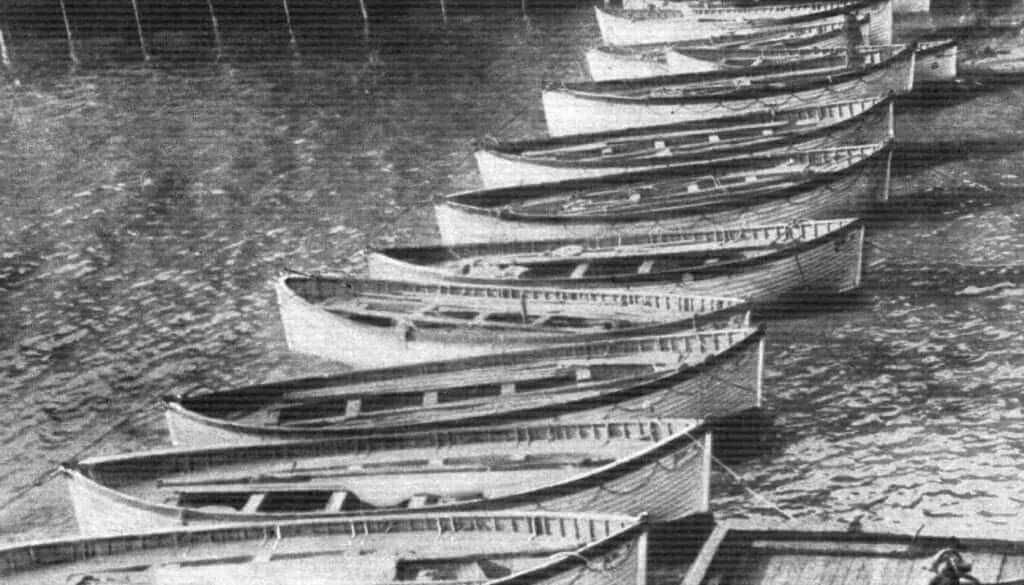
When designing a transport vehicle great attention is paid to the safety of the passengers. Engineers and designers do everything possible to ensure that as many people as possible can be saved in the event of an accident, but in the case of the Titanic, something went wrong, very wrong. When it was launched, the Titanic was the largest ship in the world; it could hold a total of 3,547 people. That’s an incredible number! Fortunately, when the Titanic made its first voyage, there were fewer people on board. According to official data, there were 2,224 registered passengers and now for the most interesting part, the original plan was for the Titanic to carry 48 lifeboats. However, the owners of the liner insisted that their number be reduced to 20. The capacity of each lifeboat was about 60 people. A simple mathematical calculation allows us to discover that only 1200 people, could have been saved only a little more than half of the passengers. Why weren’t more lifeboats installed? The official reason is that they would have taken up too much space on the deck. Blocking the passages and covering up the beautiful view of the ocean. So appearance and comfort were placed above the safety of people. to be fair, the ship was considered unsinkable, no one expected it to sink so easily. Everyone thought that even with the damage, the Titanic could stay afloat for a long time. In other words, the immediate and simultaneous evacuation of all passengers was not considered a possible situation.
4. The Drill Was Canceled
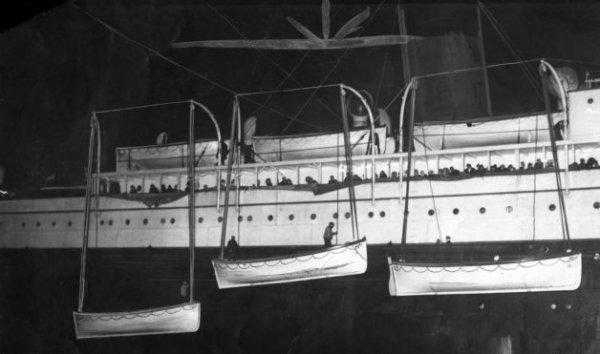
There is a thing known as a lifeboat drill. During a drill, the crew perfects the skills of preparation of the boats. their launching and control in addition passengers are prepared for possible evacuation. They learn to evacuate while remaining calm and in case of emergency they understand better how to behave and don’t fall victim to panic.
ideally, these exercises should take place once a week. The Titanic sailed on April 14th so it’s not surprising that the drill was scheduled for April 10th but for some mysterious reason it was canceled. To this day, no one knows why Captain Smith chose not to conduct the drill, perhaps he was too confident, or perhaps he thought that since there were only three days left to travel it wasn’t necessary. Either way, the decision cost a lot of people their lives. The passengers as well as the crew were not prepared for an emergency evacuation. That’s why some boats designed for 60 people in some cases were launched only half-full.
5. Musicians Played Until The End.
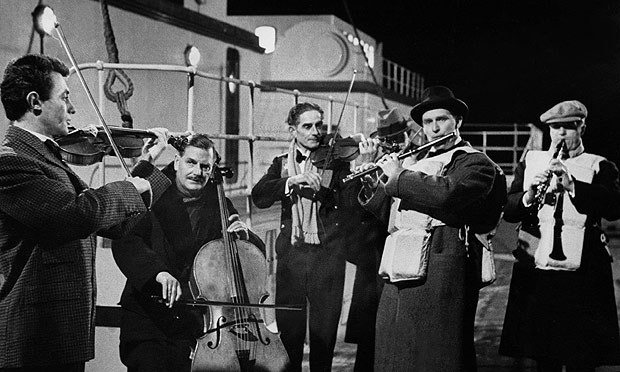
Although the Titanic boasted an amazing size and capacity, it also stood out for its interior decoration, luxuriously furnished, living rooms reading and smoking halls, and gymnasium. All this was at the service of the first-class passengers. The crew included a large number of cooks, waiters, Baker’s, and of course musicians, eight people to be exact. here’s a quote from a second-class passenger who was lucky enough to escape from the Titanic. “Many brave things were done that night but none were braver than those done by men playing minute after minute as the ship settled quietly lower and lower in the sea”. Despite the fear trouble and panic, despite knowing that their lives were about to come to an end, these brave men held their instruments in their hands and continued to play until the end until the last second. They knew that music calmed people made the tragedy less terrible and therefore they could not stop. None of the eight musicians survived and only three bodies were found. The youngest of them was 21 years old.
6. Tragedy Could Have Been Avoided If They Only Had Access To The Room Where The Binoculars Were Kept
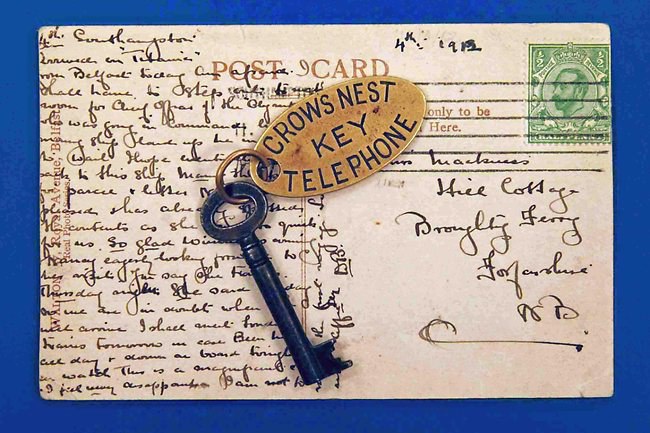
David Blair is a very lucky man, he was supposed to be the second officer on the Titanic but at the last second, he was pulled out. This incident saved his life which should have made him incredibly happy but something clouded his joy because maybe he was the only person who could have saved the Titanic. How? A hundred years ago ships were not equipped with smart advanced technology like they are today. To see a threat on the horizon, people had to keep an eye out and binoculars were of great help but here’s the problem. The crew of the Titanic had no access to the room where the binoculars were kept because David Blair was responsible for the keys. He left the ship in a hurry and he simply forgot to return the key he left it in his pocket. if the crew had had access to the binoculars they would have noticed the iceberg in advance. The ship would have had time to change course. Hundreds of people would have remained alive but the Titanic seemed to attract bad luck. A series of coincidences and mistakes led to disaster, a fate from which it could not escape.
7. There Is A Stewardess Known As Miss Unsinkable.
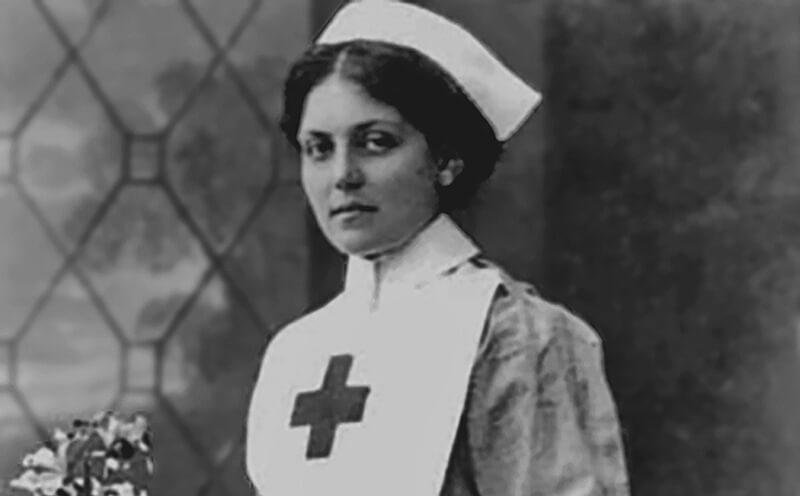
In the late 19th and early 20th centuries, White Star Line was considered the largest shipping company in the world. In 1907, its owners decided to build three huge ocean liners as you may have guessed; the Titanic was one of them. The other ships were the “Olympic” and “the gigantic” later named “Britannic”. No matter how huge and luxurious these incredible ships were all their stories ended in tragedy. These three are rightly considered the most famous ships in history. There are many books and films telling their story but there is something they all have in common or to be precise, someone, Violet Constance Jessup born in Argentina. This unremarkable stewardess is known as Miss unsinkable. On September 20th, 1911 the ship Olympic crashed with the cruiser Hawk, fortunately, left no victims. Violet was on board the ocean liner at the time. When the Titanic hit an iceberg she was also on board. Luckily she was able to get to a lifeboat and finally during World War one, violet served as a nurse with the British Red Cross. she was sent to board the Britannic which was then a hospital ship. On November 21st, 1916, the huge ship, was blown up by a mine but violet survived the accident. Now, do you understand why she is Miss unsinkable? By the way, the woman originally did not want to work for White Star Line but her friends convinced her to work on the Titanic, assuring her that it would be a great recommendation in the future.
We don’t know whether to call violet Constance Jessup lucky or not. Let’s just say that this series of incidents is somewhat mysterious and curious.
8. The Engineers’ Sacrifice.
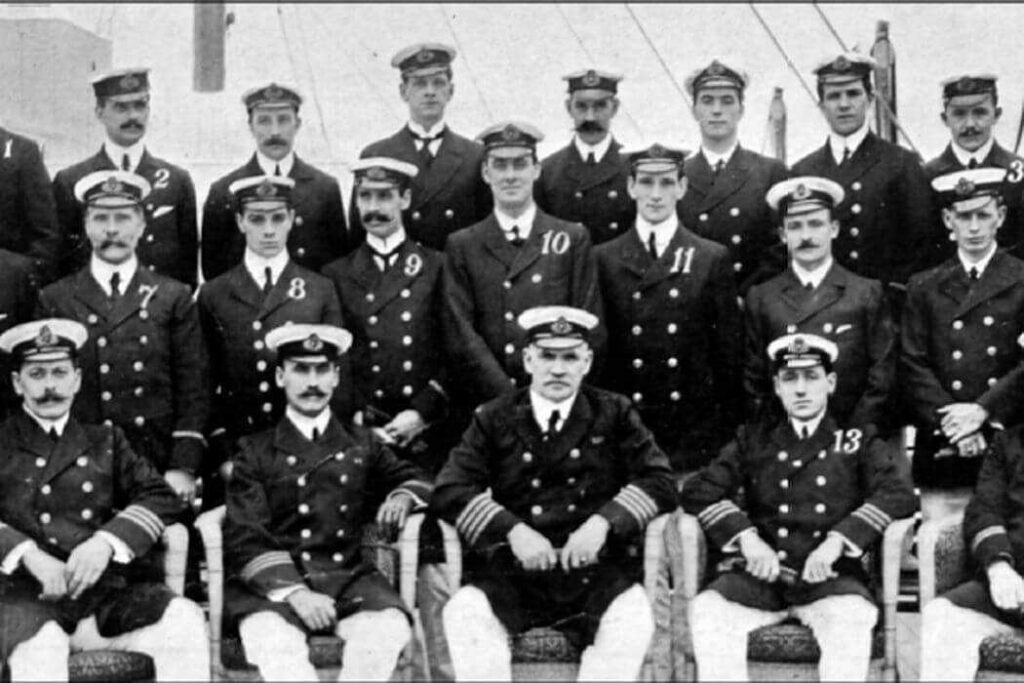
We have already talked about a large number of crew members onboard the Titanic; now let’s focus on this fact and at the same time pay tribute to the people who did everything possible to save others. About 900 crew members worked on the Titanic, less than a third survived. Among the victims were all the engineers that are because they simply didn’t have time to save their lives. 25 engineers, 6 electrical engineers, two Boilermakers, a plumber, and a clerk, while there were panic and fear on the deck, they stayed down in the boiler rooms. they needed to keep them running so that there would be electricity and the pumps would continue to pump the water. They were fighting against death. For every inch, of the ship, the engineers didn’t want to give up and most of them probably didn’t know that they were only delaying the disaster and that it was not possible to prevent it yet these people remain an example of courage, bravery, and devotion. In the city of Southampton on the south coast of Britain, there is a memorial in their Honour.

The 1814 London beer flood
In 1814, there was a beer flood in London when a tank containing more than 300,000 gallons ruptured in which 8 people drowned.

Sylvan Goldman: The Visionary Who Revolutionized Shopping with the Cart
The inventor of shopping carts, Sylvan Goldman, had to hire several male and female models to push carts around in his store, demonstrate their utility, and explain their use to other customers, due to not catching on initially.

Iranian inmate dies from happiness after finding out he will not be executed
An Iranian man who was convicted of murder reportedly died from happiness after learning that his death sentence was being commuted.

Nordlingen, The Town Inside A Meteorite Crater With Millions Of Meteorite Diamonds
The German town of Nördlingen is embedded with 72,000 tons of microscopic diamonds. About 15 million years ago, a meteorite hit this region, and the impact created a massive depression and formed rocks containing diamonds, glass, and crystals. The town was built in the impact crater sometime around 898 CE.

The story of Bill Haast, who lived to be 100 despite his extensive snake venom injections
Bill Haast immunized himself by injecting snake venom into his blood for several years. He holds the Guinness World Record for surviving the most lethal snake bites, having been bitten over 172 times. Bill became known as "Snake Man" around the world and lived for over 100 years.

Roller Coasters were First Invented to Distract People from sin
Roller coasters were invented to distract Americans from sin. In the 1880s, hosiery businessman LaMarcus Thompson didn’t like that Americans were going to places like saloons and brothels and created the first roller coaster on Coney Island to persuade them to go there instead.

The Mouth of Truth: Ancient Rome’s Legendary "Lie Detector" That Bit Off Hands
Discover the chilling legend of the Mouth of Truth (Bocca della Verità) in Ancient Rome—a massive carved stone face believed to bite off the hand of anyone who lied while inserting their hand into its gaping mouth. Uncover the truth behind its eerie reputation and how this ancient artifact became a symbol of honesty and fear.

Terry Fox, a 21-year-old one-legged cancer patient who ran 143 days before dying
Terry Fox was a 21-year-old one-legged cancer patient who ran 3,339 miles across Canada in 143 days before dying.

Before Radar: How Giant Acoustic Mirrors Detected Enemy Aircraft in WWI and WWII
Long before radar revolutionized air defense, enormous acoustic mirrors and specialized sound locators stood as the first line of defense against enemy aircraft. Designed as giant “ears,” these structures amplified distant engine noises, allowing operators to detect incoming planes by sound alone. Dive into the intriguing world of these pioneering listening devices, their operation, limitations, and enduring legacy in military history.

Nathan's Famous Doctor Stunt
When Nathan's Famous Hot Dogs first opened in 1916, the owner hired people to dress as doctors and eat hot dogs outside his shop, to convince people his hot dogs were healthy.

The Bizarre (And Magical) Duel Between Chung Ling Soo And Ching Ling Foo
Ching Ling Foo and Chung Ling Soo were two magicians from the early 20th century who were bitter rivals. While Ching Ling Foo was genuinely Chinese, Chung Ling Soo was actually a New Yorker named William Robinson.

Will & William Wests: The puzzling situation of two inmates who are identical but not related
These are the mugshots of Will West and William West, and they are not related. They were both sent to Leavenworth Prison at the same time, in 1903, and after some confusion, the staff understood they had two different prisoners with the nearly same name, who looked exactly alike. They are part of the reason fingerprints are now used as identification.

Graves holding hands over wall, A Catholic woman and her Protestant husband grave
A protestant man and a Catholic woman who weren't allowed from being buried together in a graveyard in 19th-century Holland turned their graves into a monument showing them holding hands across the wall separating them.

Louis Le Prince Invented the motion picture camera, and then he mysteriously disappeared
Louis Le Prince, the inventor of motion pictures, vanished without a trace in 1890. Thomas Edison quickly claimed the title of "first and sole inventor of cinema," even taking Le Prince's son to court to dispute it. A few years later, the son also dies under mysterious circumstances.

Nearest Green, America's first known Black master distiller
Nathan "Nearest" Green was an African-American head stiller who is now more frequently referred to as a master distiller. He was renowned for imparting his distilling knowledge to Jack Daniel, the creator of Jack Daniel's Tennessee whiskey distiller, after Jack Daniel was freed from slavery following the American Civil War.

Underground Railroad to Mexico freed thousands of slaves in 1829
Slavery was abolished in Mexico in 1829. Slaves were escaping to Mexico, and slaveholders in the US were aware of this. The US attempted to get Mexico to sign a fugitive slave treaty, which would have required Mexico to send back escaped slaves to the US. But, Mexico refused, arguing that slaves were free as soon as they set foot on Mexican soil.

From Flapper to Fashion Week: How 1920s Style Still Shapes Modern Trends
The roaring 1920s revolutionized fashion, introducing bold styles, daring cuts, and a spirit of freedom that still inspires today’s wardrobes. From flapper dresses to statement accessories, here’s how the Jazz Age lives on in modern fashion.

How European Rabbits Took over Australia
In 1859, wealthy settler Thomas Austin released 13 wild rabbits on his Australian estate. By 1920, their population grew to 10 billion.

Story of Kathrine Switzer: the first woman to run in Boston Marathon
Before women were allowed to run in the Boston Marathon, Kathrine Switzer participated. A race official attempted to forcefully remove her from the race in 1967, but her boyfriend pushed him down. She was the first female finisher who had a numbered entry in the race.

Shizo Kanakuri’s 1912 Olympic Marathon Finished 54 Years
At the 1912 Olympics, a marathon runner quit and went home to Japan without telling officials and was considered a missing person in Sweden for 50 years. In 1966, he was invited to complete the marathon. His time: 54 years, 8 months, 6 days, 5 hours, 32 minutes, and 20.379 seconds.

George Dantzig solved two famous “unsolved” problems in statistics mistakenly as assignment
In 1939, George Dantzig arrived late to his statistics class. On the board were two famous “unsolved” problems in statistics written as an example by his professor. Dantzig mistook the examples for homework assignments. He solved the “unsolved” problems and submitted the homework to his professor a few days later. His solutions earned him a doctorate.

The story of a man who spent 72 hours with 72 venomous snakes to prove they only bite when provoked
In the 1980s, an Indian man spent 72 hours in a glass cabin with 72 snakes, some of which were extremely venomous. His aim was to prove that snakes only attack when provoked. Remarkably, he was not bitten once in those 72 hours and even set a Guinness World Record in the process.

how Ferris wheel invented
In 1891, Chicago challenged engineers to create a structure to surpass the Eiffel Tower for the World's Columbian Exposition. George Washington Gale Ferris jr. responded with the original Ferris Wheel, a giant rotating structure elevating visitors above the city. This invention became an iconic attraction at the fair.

Keith Sapsford: The Story of 14-Year-Old Stowaway
The final image of 14-year-old Australian Keith Sapsford, who aspired to travel the world. In February 1970, he sneaked into the wheel-well of a plane flying from Sydney to Tokyo. It opened mid-air & fell out. When a photographer was testing a new lens, he captured this moment on film and was surprised when it developed.

The Assassination Of King Alexander
The assassination of King Alexander of Yugoslavia marked a pivotal moment in the country's history. This article delves into the rise and reign of King Alexander, exploring his early life and ascension to the throne. It also examines the political and social climate in interwar Yugoslavia, setting the stage for the tensions and challenges that ultimately culminated in his tragic assassination. By understanding the context in which this event unfolded, we can better grasp the significance and impact it had on the nation and its future.


























